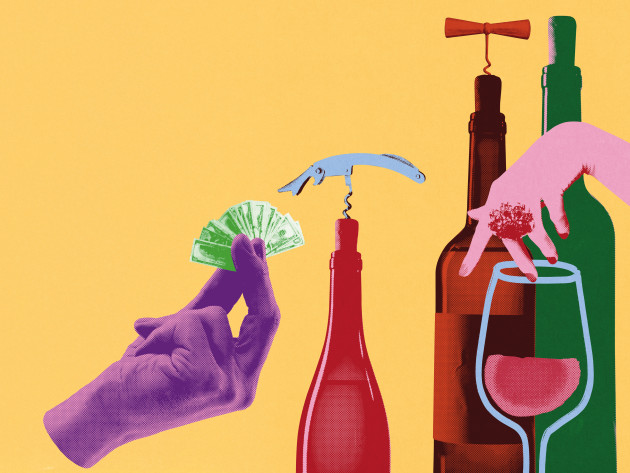
En primeur: putting lipstick on a pig
Americans call it putting lipstick on a pig. I was listening to one of Corney & Barrow’s Bordeaux Unpicked podcasts the other day. Yes, that’s right, podcasts plural. There are six of them to date, delving into the minutiae of the 2024 vintage. One of the participants joked that there are two types of harvest in Bordeaux – vintages of the century and “better than expected” – but that’s where the humour ended.
The team did their manful best to look on the bright side of the growing season. Yes, there was “quite a bit of rainfall”, but at least there was no frost damage and the summer was “really good”. To be fair to the Corney & Barrow team – and the other fine wine merchants who have been trying to breathe some life into the current en primeur campaign – the 2024 wines aren’t terrible. People I’ve spoken to who schlepped around the châteaux in April were surprised that there were some more than decent samples, thanks to meticulous selection in the vineyard and cellar, at least for those who could afford it. “An awful lot better than 2013,” was one taster’s not exactly up-beat assessment.
But what about the market? How have punters responded to the 2024 releases? There have been a couple of limited successes – Château Lafite and Les-Carmes-Haut-Brion – but overall it has been a “total disaster” according to one fine wine broker. Another key figure told me his company would be lucky to sell £0.5m of wine this year, compared with £75m in 2009. In the Financial Times last weekend, Jancis Robinson MW argued that the threat to the en primeur system feels “existential”. She may well be right.
-
Read more: Sommelier Wine Awards 2025 results
It’s worth looking back 15 years to understand what’s gone wrong with the whole circus, beginning in April 2010. To take only one property, let’s look at First Growth Château Margaux. A year earlier, the 2008 had been offered at £1,600 a case to UK customers – a decent price for a good to very-good vintage. That was the way things worked then. The hype started with 2009, the first of two back-to-back “vintages of the century”. Or was it the millennium? Amid breathless demand, the new wine sold to very willing punters at £8,500 in bond. “People were begging us for top Bordeaux,” one salesman remembers.
Negative equity
Guess what the 2008 is worth today? £3,350. And the 2009? £5,850. Like the equally vaunted 2010 (£8,200 down to £5,400), the latter wine has shown a massive loss. There have been better-value releases of Château Margaux since then – the 2012, 2013, 2014, 2015 and 2019 have all gone up in price – but on the other side of the ledger, you have 2011, 2016, 2017, 2018, 2020 and 2021. The two that are mostly deeply under water – a vinous form of negative equity – remain 2009 and 2010. If you’d bought a case every year between 2009 and 2021, you would be looking at an accumulated loss of £4,758, excluding storage. Without the Black Label 2015, released after winemaker Paul Pontallier died, which has become a collector’s item, the sum would be even worse.
Those two exceptional, if over-priced, vintages occurred at a particular point in history. Despite the financial crash in 2008, there were still plenty of people who wanted to buy – and often invest – in wine. Hong Kong had abolished wine duty, mainland China was booming and Bordeaux was the acknowledged centre of the fine wine world, a position that is no longer as secure as it was. To many drinkers, especially those under 40, claret feels like yesterday’s wine. Older collectors have cellars full of Bordeaux, much of which has shown little or negative return on investment. “I hate to think what will happen when those people start dying,” one fine wine merchant told me. “The market will be awash with Bordeaux.”
These days, very few people want to buy young claret, largely because it makes no financial sense; they’ve been bitten enough. Bordeaux château owners may complain about “le Bordeaux-bashing”, but they have done most of this to themselves. They decide on the prices of their wine, leaving other people – négociants, importers and brokers – to sell it.
The fine wine market as a whole is in the doldrums, so you can’t blame those people for trying to flog something – anything – right now. Yes, sales people are sometimes economical with the truth, but they have to play the hand they’ve been dealt. In the circumstances, who can blame them for reaching for the lipstick?




